Ever wondered why the Mona Lisa’s smile is so captivating? It’s all in the sacred geometry.
Table of Contents
This ancient form of art and symbolism, found in everything from Da Vinci’s masterpieces to the Parthenon, is not just aesthetically pleasing but also deeply meaningful.
In this article, we’ll explore the top 10 examples of sacred geometry in art and culture, revealing the profound connections between form, beauty, and the mysteries of the universe. Stay with us to unlock these secrets.
Key Takeaways
- Explore the significance and meanings of sacred geometry symbols.
- Uncover the interplay between science, spirituality, and universal harmony.
- Experience the transformative power and ancient wisdom encoded in sacred geometry.
Top 10 Sacred Geometry Symbols
The Fruit of Life in Sacred Geometry Art
The Fruit of Life, a key symbol in sacred geometry, represents the interconnectedness of all life. It’s seen in art and nature, symbolizing a bridge between the physical and spiritual realms.
Artists incorporate the Fruit of Life into their work due to its spiritual significance and aesthetic appeal. It’s found in mosaics, stained glass windows, and digital art, adding depth and meaning to these pieces.
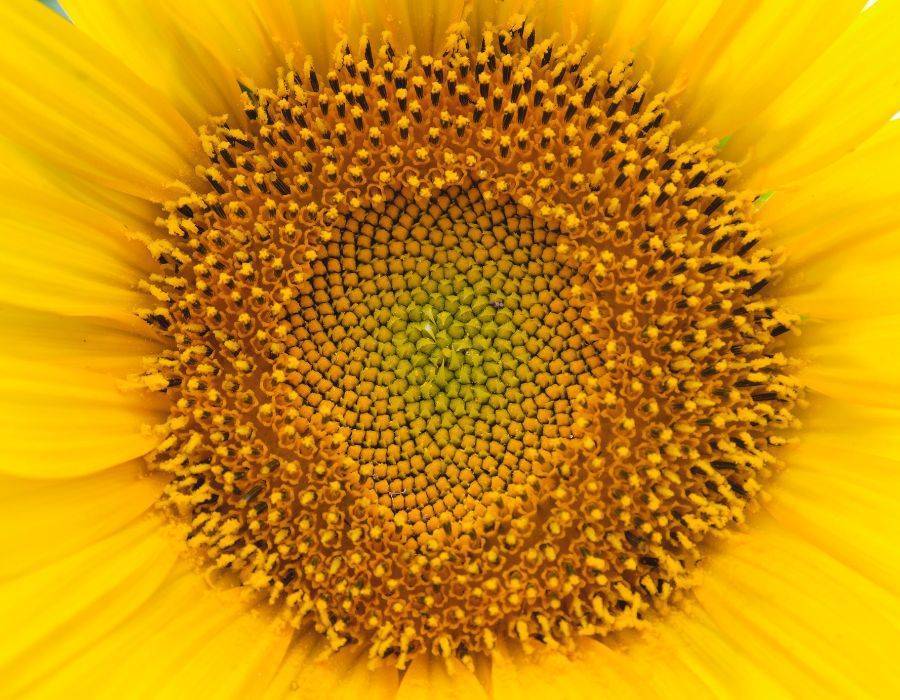
In nature, the Fruit of Life is seen in the seed arrangement of many fruits and flowers, including sunflowers. The seeds in a sunflower’s center form interlocking spirals that follow the Fibonacci sequence, a pattern aligning with the Fruit of Life.
This efficient arrangement allows maximum seed packing, demonstrating how sacred geometry principles are practical strategies used by nature for survival.
Buddhist Mandalas: Sacred Geometry in Religious Art
Buddhist Mandalas are a profound example of Sacred Geometry in religious art. These intricate geometric designs are more than just visually appealing; they represent the cosmos metaphysically or symbolically.
Mandalas serve as spiritual guidance tools, helping to establish a sacred space. In addition to their spiritual significance, Mandalas also serve as an aid to meditation, guiding the focus towards the center of the design.
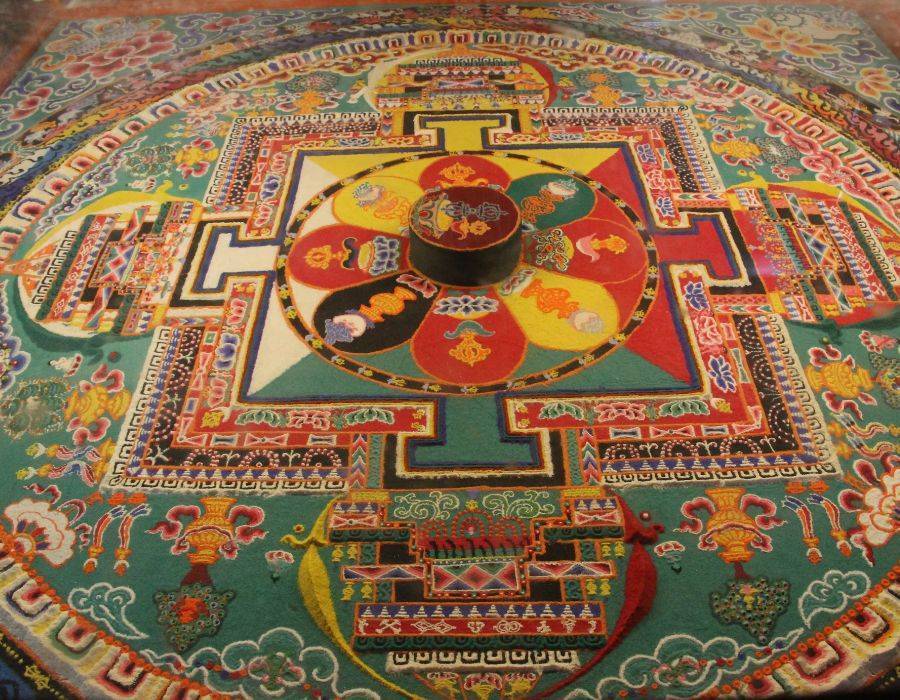
Their use in Buddhist art is a testament to the power of Sacred Geometry in facilitating spiritual exploration.
Leonardo DaVinci’s Vitruvian Man: A Masterpiece of Sacred Geometry
Leonardo DaVinci’s Vitruvian Man is a striking example of the integration of art and Sacred Geometry. This iconic image is more than just a sketch; it embodies the universal human proportions and cosmic relationships, reflecting DaVinci’s deep understanding of geometric principles.
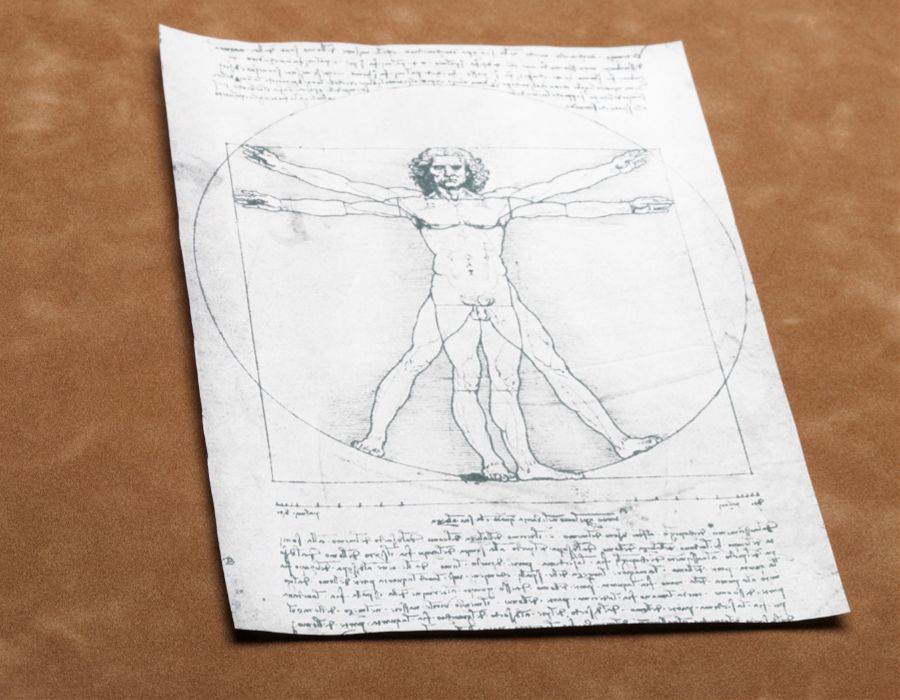
The Vitruvian Man is a testament to how Sacred Geometry can elevate art to new dimensions of meaning and beauty. It’s a compelling demonstration of the potential of Sacred Geometry to enhance our understanding of both art and the natural world.
The Mona Lisa: Hidden Sacred Geometry
Leonardo DaVinci’s Mona Lisa is not just a masterpiece of portraiture, but also a hidden treasure of Sacred Geometry. DaVinci, a known proponent of geometric principles, is believed to have incorporated them into this iconic painting, contributing to its enigmatic charm.
The precise positioning of the figure and the subtle geometry of her smile hint at a deeper layer of complexity. This hidden Sacred Geometry enhances the painting’s allure, making it a timeless piece of art that continues to captivate audiences.
Sacred Geometry in Architecture: The United Nations Building
Sacred Geometry is not confined to art alone; it extends to architecture as well. A prime example is the United Nations Building.
This iconic structure embodies geometric principles, reflecting a harmonious blend of form and function. The building’s design, with its emphasis on symmetry and proportion, resonates with the principles of Sacred Geometry.
This architectural application of Sacred Geometry demonstrates how these ancient principles can contribute to modern design aesthetics.
Farnsworth House: Modern Architecture Meets Sacred Geometry
The Farnsworth House, a masterpiece of modern architecture, is another example of Sacred Geometry in action. Designed by Ludwig Mies van der Rohe, the house showcases a perfect balance of geometric forms and open spaces.

The house’s design, with its clear lines and minimalist aesthetic, is a testament to the power of geometric principles in shaping our living spaces. It’s a compelling example of how Sacred Geometry can enhance architectural design, creating structures that are both visually appealing and harmoniously aligned with their surroundings.
The Parthenon, Greece: Ancient Sacred Geometry
The Parthenon in Greece stands as a testament to the ancient use of Sacred Geometry. This iconic temple, dedicated to the goddess Athena, embodies the geometric principles that were central to ancient Greek architecture.
The precise proportions and symmetry of the Parthenon reflect a deep understanding of Sacred Geometry. This ancient structure serves as a reminder of the enduring influence of geometric principles in art and architecture, from the distant past to the present day.
The Temples of Humankind at Damanhur: Visionary Art and Sacred Geometry
The Temples of Humankind at Damanhur are a breathtaking example of visionary art infused with Sacred Geometry. These underground hand-carved temples are a testament to the power of Sacred Geometry in creating spaces of profound spiritual significance.
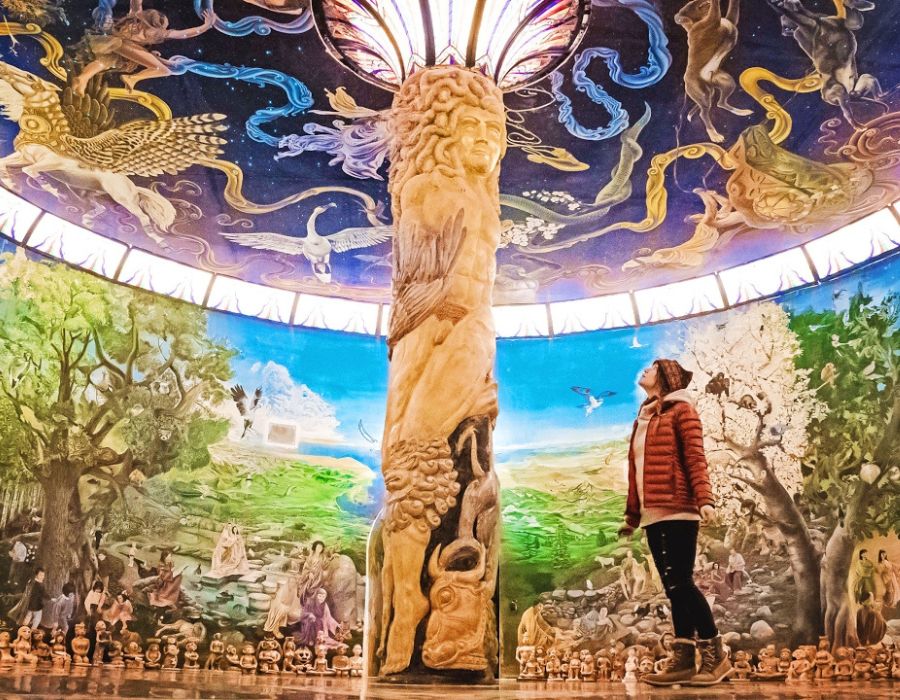
The intricate geometric designs that adorn the temples’ walls and ceilings create a mesmerizing visual experience. These designs, rooted in Sacred Geometry, enhance the temples’ spiritual resonance, making them a unique destination for seekers of spiritual and artistic inspiration.
The Fibonacci Spiral: Sacred Geometry in Nature
Sacred Geometry is not just a human invention; it’s also found in nature. The Fibonacci Spiral, a pattern of growth based on the Fibonacci sequence, is a perfect example.
This spiral pattern appears in many natural phenomena, from the arrangement of leaves on a stem to the shape of galaxies. The presence of the Fibonacci Spiral in nature underscores the universal relevance of Sacred Geometry.
It’s a reminder that these geometric principles are not just abstract concepts, but fundamental patterns that underpin the natural world.
The Five Perfect 3D Forms: Sacred Geometry in the Greek Mystery Schools
The Greek Mystery Schools taught that there were five perfect 3D forms – the tetrahedron, hexahedron, octahedron, dodecahedron, and icosahedron. These forms, known as the Platonic solids, are fundamental in Sacred Geometry.
Each of these forms is associated with a particular element – fire, earth, air, spirit, and water, respectively. The study of these forms in the Greek Mystery Schools underscores the ancient recognition of Sacred Geometry as a key to understanding the universe’s structure and the nature of existence.
Common Sacred Geometry Symbols
- Flower of Life: An interlocking pattern of circles representing the interconnectedness of all life and the underlying structure of the universe.
- Seed of Life: Consisting of seven circles, it symbolizes the creation of the universe and the seven days of creation.
- Metatron’s Cube: A complex geometric figure formed by connecting all the centers of the circles in the Fruit of Life pattern, representing the interconnectedness of all things and the divine creation.
- Sri Yantra: A complex Hindu symbol composed of interlocking triangles, representing the union of the divine masculine and feminine energies.
- Vesica Piscis: Formed by the overlapping of two circles, it symbolizes the intersection of the spiritual and physical realms.
- Tree of Life: A mystical symbol found in various cultures, representing the interconnectedness of all life forms and their spiritual evolution.
- Torus: A doughnut-shaped form that signifies the flow of energy and the cyclical nature of life.
- Golden Ratio: A mathematical ratio (approximately 1.618) that appears in various natural and man-made forms, believed to represent divine proportion and aesthetic harmony.
- Platonic Solids: Five regular polyhedra (tetrahedron, cube, octahedron, dodecahedron, and icosahedron) symbolizing the elements and fundamental structures of creation.
- Infinity Symbol: Representing the eternal nature of the universe, it signifies continuous cycles and interconnectedness.
Sacred Symbols Comparison
| Symbol | Meaning and Significance | Cultural Context | Applications |
|---|---|---|---|
| Flower of Life | Represents interconnectedness of life | Various cultures | Art, meditation |
| Sri Yantra | Union of divine energies | Hinduism | Spiritual practices |
| Platonic Solids | Fundamental structures of creation | Ancient philosophy | Mathematics, spirituality |
| Vesica Piscis | Intersection of spiritual and physical realms | Christianity, ancient civilizations | Architecture, symbolism |
| Golden Ratio | Divine proportion and aesthetic harmony | Mathematics, art | Design, architecture |
| Tree of Life | Interconnectedness of all life forms | Various cultures | Spiritual growth, symbolism |
| Metatron’s Cube | Interconnectedness and divine creation | Ancient mysticism, sacred texts | Meditation, energy work |
| Torus | Flow of energy and cyclical nature | Science, spiritual philosophy | Physics, meditation |
| Sri Chakra | Representation of the divine feminine | Hinduism, Tantra | Meditation, spiritual practice |
| Infinity Symbol | Eternal nature and continuous cycles | Various cultures, mathematics | Symbolism, mathematics |
Conclusion
Sacred Geometry has left an indelible mark on art and culture, shaping our perception of beauty and the universe. From the enigmatic smile of the Mona Lisa to the harmonious design of the United Nations Building, Sacred Geometry has influenced our aesthetic sensibilities and our understanding of the world around us.
Looking forward, Sacred Geometry will continue to inspire artists, architects, and spiritual seekers. As we delve deeper into these ancient principles, we may uncover new ways to interpret and appreciate the world around us.
The future of Sacred Geometry is as boundless as the geometric patterns it studies, promising a wealth of insights and inspirations yet to be discovered
FAQs
What are examples of sacred geometry?
u003cemu003eSacred Geometryu003c/emu003e includes patterns like the Fruit of Life, Buddhist Mandalas, and the Fibonacci Spiral. It’s seen in DaVinci’s Vitruvian Man, the Parthenon, and modern architecture like the Farnsworth House.
What is sacred geometry in art?
u003cemu003eSacred Geometryu003c/emu003e in art refers to the use of geometric patterns that have a spiritual or symbolic meaning. These patterns are often used to represent the cosmos or other metaphysical concepts.
What is the most famous sacred geometry?
The most famous u003cemu003eSacred Geometryu003c/emu003e is arguably the Flower of Life. It’s a pattern of overlapping circles that is found in many ancient cultures and is believed to contain the patterns of creation.
What are the 5 elements of sacred geometry?
The five elements of u003cemu003eSacred Geometryu003c/emu003e, known as the Platonic solids, are the tetrahedron, hexahedron, octahedron, dodecahedron, and icosahedron. Each form is associated with a particular element – fire, earth, air, spirit, and water, respectively.
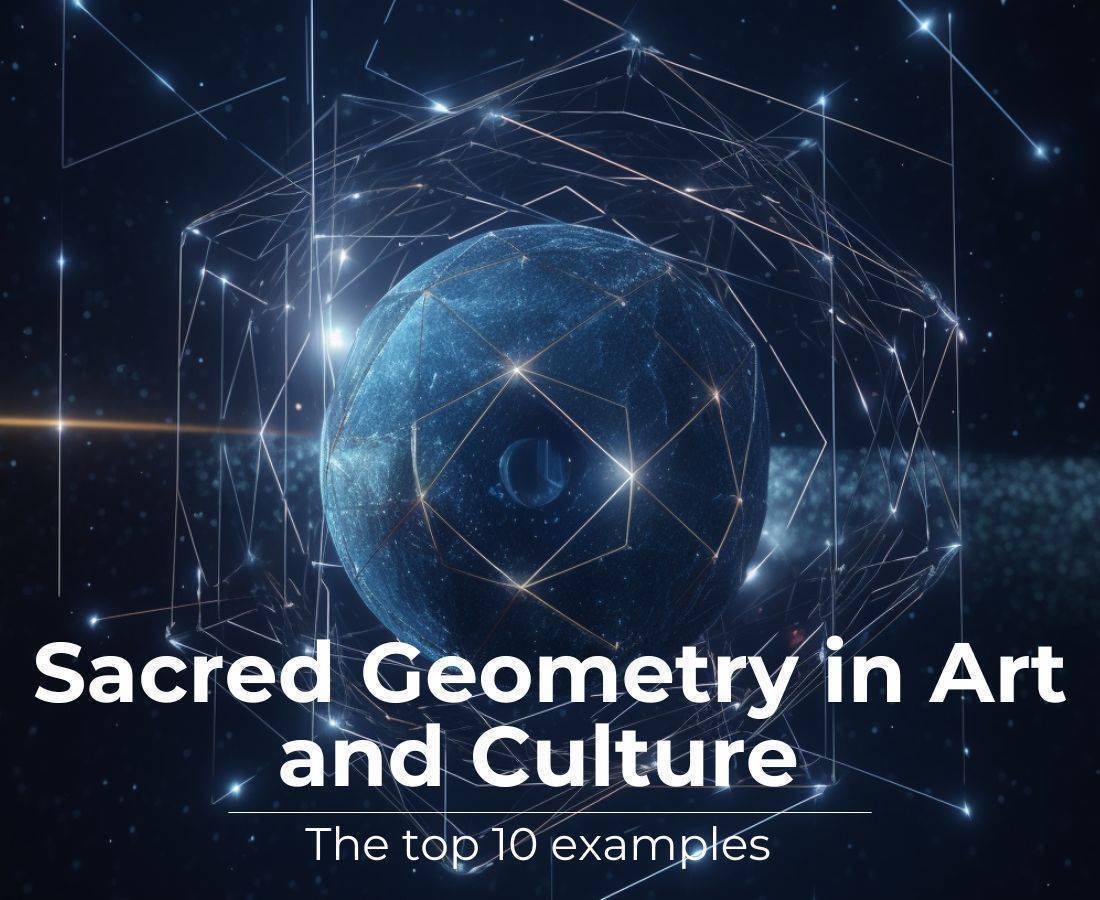



Excellent analysis! Thank so much for your expertise your wisdom and knowledge on this esoteric subject- Many Blessings!
Thank you so much for your kind words! It’s always a joy to share insights on such a fascinating topic. I’m glad you found the analysis enriching. If you have any more questions or need further clarification on any aspects of sacred geometry, feel free to reach out. Many blessings to you too! 🌟